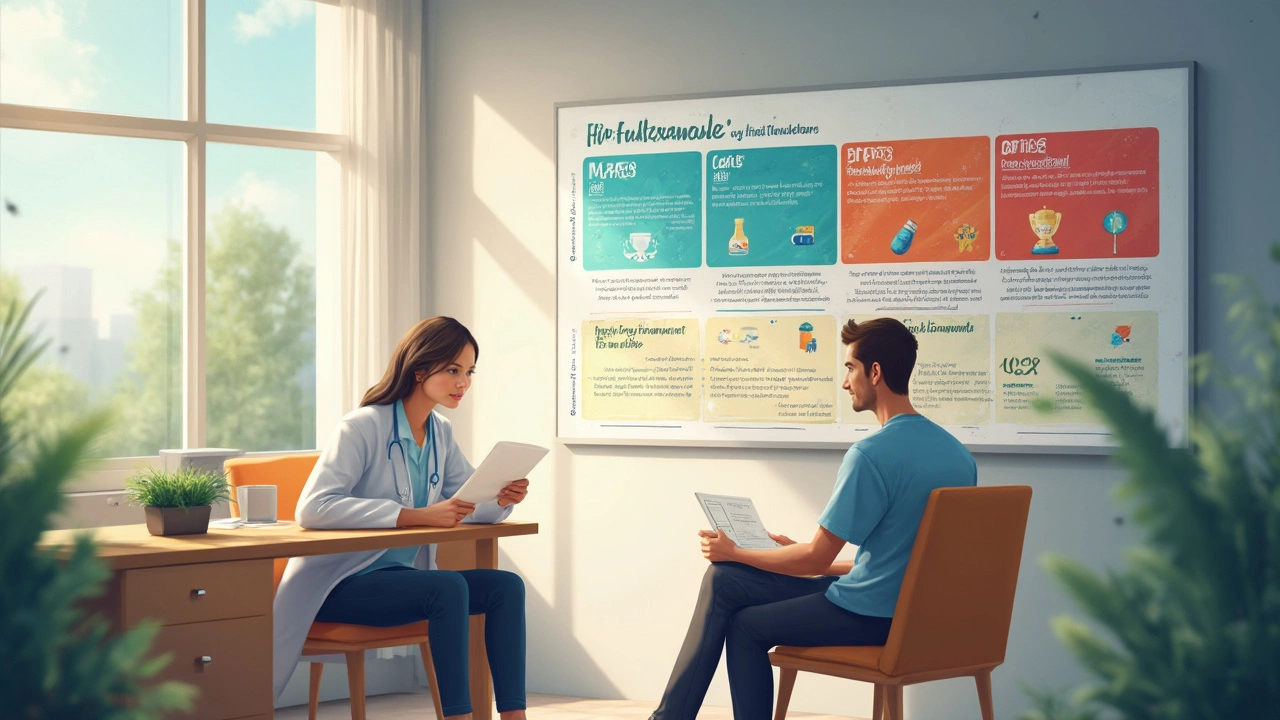Hypertension Treatment: What Works and How to Start Today
High blood pressure can feel like a silent threat, but fixing it doesn’t have to be hard. Below you’ll find the most practical ways to bring your numbers down—whether you prefer a pill, a diet tweak, or a bit of exercise.
Medication Options That Actually Lower Pressure
Doctors usually start with one of three drug families: thiazide diuretics, ACE inhibitors, or calcium‑channel blockers. Thiazides (like hydrochlorothiazide) help your kidneys get rid of excess salt, which drops volume and pressure. ACE inhibitors (such as lisinopril) relax blood vessels by blocking a hormone that makes them tighten. Calcium‑channel blockers (like amlodipine) keep the muscle in vessel walls from contracting too hard.
Most patients need just one drug, but many end up on two or three to hit the target <130/80 mmHg. If a medicine gives you a cough, swelling, or dizziness, tell your doctor—there’s usually a good alternative.
Remember to take your pills at the same time every day. Setting a phone alarm or pairing medication with a daily habit (like brushing teeth) helps you stay consistent.
Lifestyle Changes That Really Move the Needle
Even if you’re on medication, lifestyle tweaks can boost results and sometimes let you lower the dose. Here are the biggest winners:
- Cut sodium: Aim for less than 1,500 mg a day. Swap table salt for herbs, read food labels, and avoid processed snacks.
- Eat more potassium: Bananas, oranges, spinach, and beans help balance sodium and ease pressure.
- Exercise regularly: Just 30 minutes of brisk walking most days can drop systolic pressure by 4‑9 mmHg.
- Limit alcohol: No more than two drinks a day for men, one for women. Excess booze spikes pressure and adds calories.
- Watch your weight: Losing even 5 % of body weight can bring numbers down dramatically.
Stress also plays a role. Simple breathing exercises, short meditation, or a hobby you enjoy can keep cortisol—your stress hormone—from tightening vessels.
If you love coffee, don’t quit cold turkey. Most people tolerate up to three cups a day without a big impact, but listen to your body and adjust if you notice a jump.
Lastly, keep track. A home blood‑pressure cuff costs under $50 and gives instant feedback. Write down each reading and share trends with your doctor every few weeks.
Combining the right meds with these everyday habits usually gets blood pressure under control faster than either approach alone. If you’re new to treatment, start with one lifestyle change, then talk to your doctor about medication. Small steps add up, and you’ll feel the benefits in energy, sleep, and overall health.
Got questions about a specific drug or want a quick meal plan to lower sodium? Drop a comment below or search our site for detailed guides on each medication and diet tip.
-
26
Exploring various alternatives to Furosemide can open up multiple treatment paths, especially for those dealing with hypertension and fluid retention. Each alternative has its own set of pros and cons, which can impact a patient's choice based on their health needs. This guide breaks down nine options to consider, allowing you to weigh what's best for your situation.

